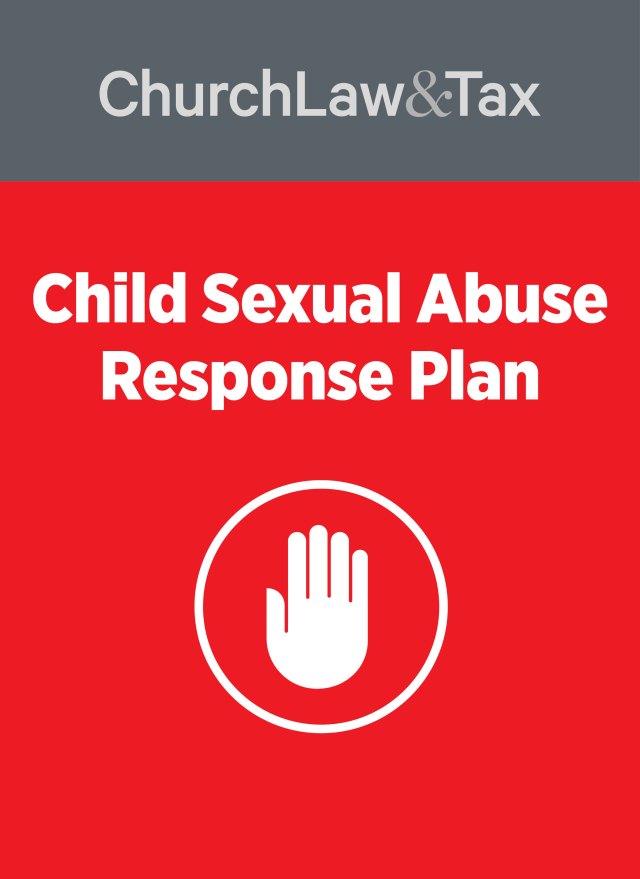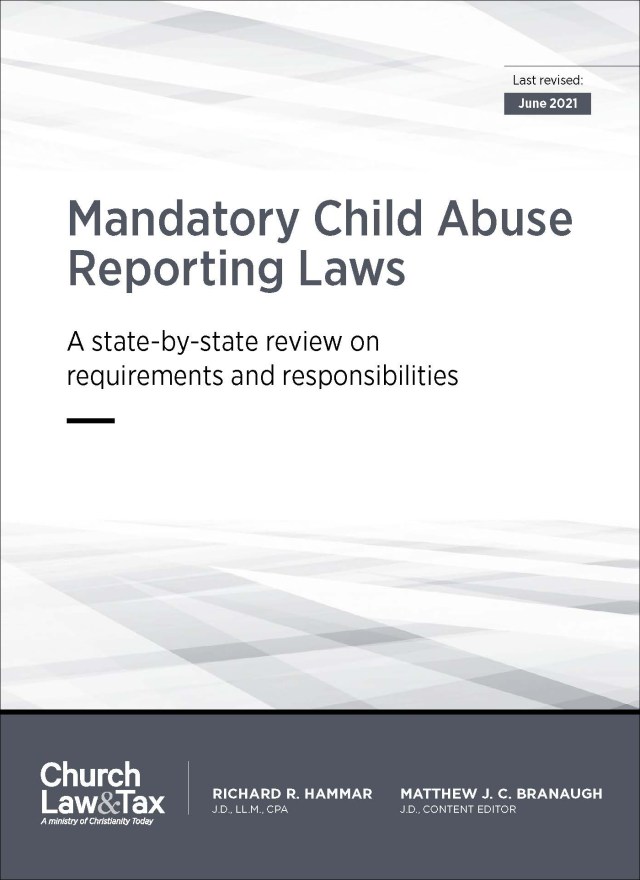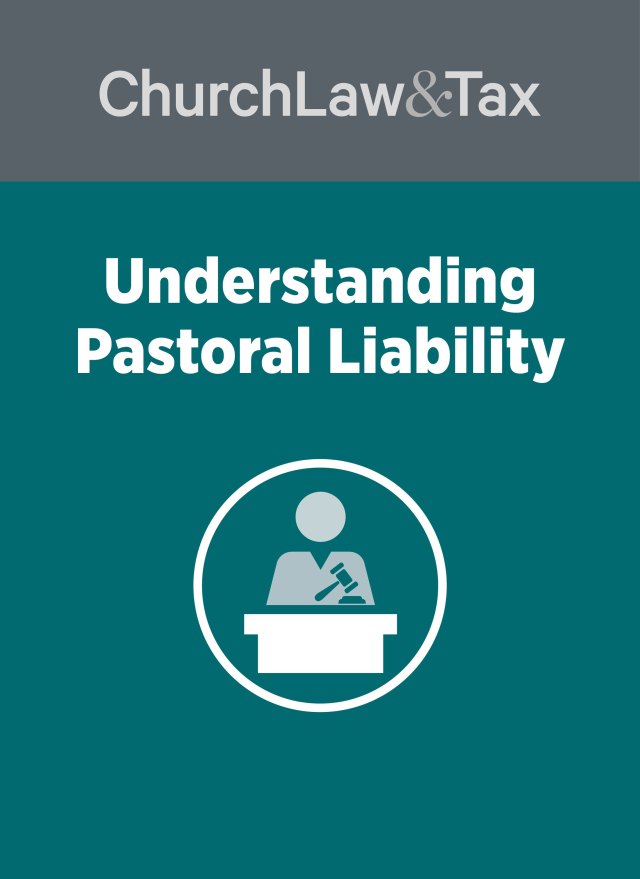• Key point 10-07. A church may exercise reasonable care in selecting ministers or other church workers but still be responsible for their misconduct if it “retained” them after receiving information indicating that they posed a risk of harm to others.
• Key point 10-07.1. Some courts have found churches liable on the basis of negligent retention for the sexual misconduct of ministers and other church workers on the ground that the church was negligent in retaining the offender after receiving credible information indicating that he or she posed a risk of harm to others.
• Key point 10-09.1. Some courts have found churches liable on the basis of negligent supervision for a worker’s acts of child molestation on the ground that the church failed to exercise reasonable care in the supervision of the victim or of its own programs and activities. Negligence as a Basis for Liability
The Pennsylvania Supreme Court ruled that a church and diocese could not be legally responsible for a priest’s repeated acts of child molestation occurring off of church premises. A Catholic priest befriended a 10-year-old boy (“Michael”) who was mildly retarded, and soon began sexually molesting him. The priest often took Michael and his brothers out to eat after religion classes, and allowed the boys to watch television in his bedroom at the rectory. He became Michael’s godfather, and would ask Michael’s mother to take the boys out to dinner. He also traveled with Michael and his brothers, and would often buy the boys toys and candy. Over the course of about 6 years, the priest molested Michael between 50 and 75 times in the rectory bedroom. The priest was reassigned to another parish in another state, and on at least two occasions Michael visited him. On each of these occasions, the priest molested Michael in his hotel room. In 1988, Michael sued the priest, his church, and a diocese. He claimed that the church and diocese were responsible for the priest’s acts on the basis of negligent retention and supervision. During the trial other boys testified that the priest had molested them, and that he used the same pattern of befriending them, treating them to gifts and trips, and then molesting them. One boy testified about two trips to Puerto Rico, during which the priest repeatedly molested him.
The priest himself admitted during cross-examination that he had molested numerous children, including one boy “hundreds of times” during a 4-year period. He testified that he molested the first child in 1967, approximately two years after his ordination, and that he continued to molest child after child within the diocese in the years that followed, usually in the rectories where he lived and worked as an assistant pastor. He admitted that he took many trips with boys from the parish, during which he would molest them.
Michael also presented evidence that the diocese had actual notice of the priest’s pedophilia as far back as 1967 when the priest’s “supervisor” was informed that the priest had molested a 14-year-old boy. Further, Michael argued that another “supervisor” saw the priest take him and his brothers into his rectory bedroom, and should have known that the priest was engaged in pedophilic behavior. After an 11-week trial, the jury determined that the church and diocese knew that the priest was molesting children, that they were negligent in their retention and supervision of the priest, that they had a pattern and practice of ignoring allegations of pedophilic behavior among priests, and that their negligence was a substantial factor in bringing harm to Michael. A state appeals court ruled that the church and diocese could not be guilty of negligent supervision since all of the priest’s acts of molestation occurred off of church premises. The court noted that the Restatement of Torts (an authoritative legal text) imposes liability for negligent supervision upon employers only for misconduct occurring on their premises. It pointed out that all of the priest’s acts of molestation occurred in motel rooms while on trips, and not on church premises. Michael appealed to the state supreme court.
The supreme court ruled that the statute of limitations prevented Michael from suing the church. However, the statute of limitations did not bar the claim against the diocese for the two acts of molestation that occurred when Michael was visiting the priest at his new parish. The court concluded that the diocese was responsible for the priest’s acts:
Here [the diocese] knew for certain that [the priest] had a propensity for pedophilic behavior and were aware of several specific instances of such conduct. [It] knew that placing him in a position in which he would have contact with children would afford [him] ample opportunity to commit further acts of abuse, which would likely result in extreme harm to the children under his supervision. Knowing all of this [the diocese] had a duty to take appropriate precautions to prevent him from molesting any more children, e.g., by assigning him to a position in which he would not have any contact with children, by ensuring that he sought treatment for his disorder, or by terminating his employment altogether. [The diocese], however, did not attempt to prevent the foreseeable harm, and instead undertook a course of conduct that increased the risk that [the priest] would abuse Michael and other children. Instead of keeping him away from children altogether, they disregarded [his] misconduct and allowed him to have unsupervised contact with children. Instead of responding to [his] pedophilic behavior, they concealed and ignored it. [The diocese] knew [the priest’s] history and was in a position to prevent him from repeating it, yet for years it willfully allowed him to go on molesting children with impunity. [Its] inaction in the face of such a menace is not only negligent, it is reckless and abhorrent. Hence … the diocese is as responsible as [the priest] for the harm done to Michael, or, as the jury found, even more liable than the molester himself.
Application. This case is important for one fundamental reason-it demonstrates the human suffering, and substantial jury verdicts, that can occur as a result of a failure on the part of church leaders to respond appropriately to evidence that a minister or lay church worker poses a risk of harm to others. In this case, the court concluded that the diocese knew of the risk the priest was to children, and yet “instead of keeping him away from children altogether, they disregarded [his] misconduct and allowed him to have unsupervised contact with children. Instead of responding to [his] pedophilic behavior, they concealed and ignored it. [The diocese] knew [the priest’s] history and was in a position to prevent him from repeating it, yet for years it willfully allowed him to go on molesting children with impunity. [Its] inaction in the face of such a menace is not only negligent, it is reckless and abhorrent.” It is extraordinary to note that the court found the diocese to be more culpable than the priest himself. Further, the court found the diocese to be liable for $1 million in punitive damages. Such damages are awarded by juries when a defendant’s actions are especially reprehensible. It is important to note that they are not covered under any church insurance policy, and so the diocese would be responsible for paying this portion of the verdict out of its own resources. Hutchinson v. Luddy, 1999 WL 1062862 (Pa. 1999).
© Copyright 2000 by Church Law & Tax Report. All rights reserved. This publication is designed to provide accurate and authoritative information in regard to the subject matter covered. It is provided with the understanding that the publisher is not engaged in rendering legal, accounting, or other professional service. If legal advice or other expert assistance is required, the services of a competent professional person should be sought. Church Law & Tax Report, PO Box 1098, Matthews, NC 28106. Reference Code: m67 m10 c0500



